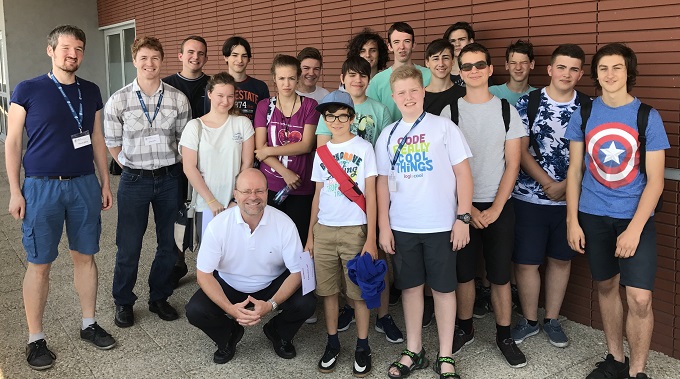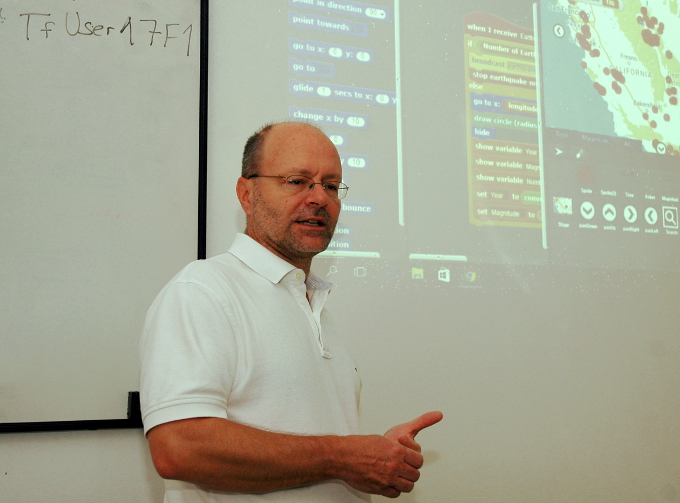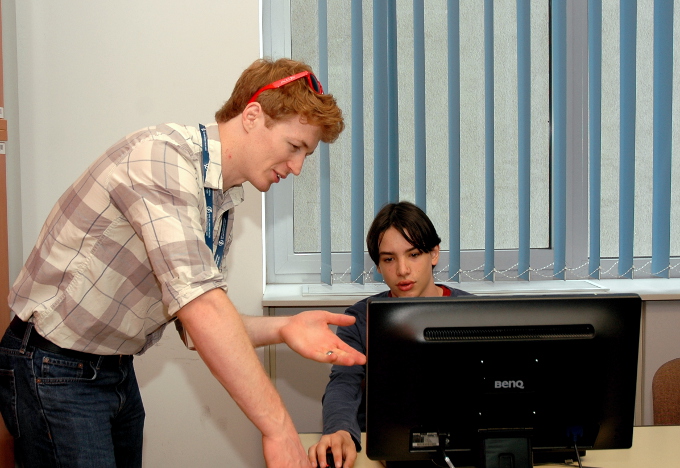2017. October 12.
A former BME student, currently a research scientist at Vanderbilt University, and his team are developing a novel GPS and acoustic based system.
“Developing a shot detection system to protect elephants is a very exciting project that Vodafone has just recently awarded a grant to,” was the response to bme.hu’s question by Ákos Lédeczi who works as a research scientist at Vanderbilt University, a renowned institution in the USA which he joined three decades ago after graduating from the University of Technology in Budapest.
The development of the device dubbed WIPER (Wireless anti-poaching collar) is a joint effort between Vanderbilt University, Colorado State University (CSU) and the organisation called Save the Elephants (STE). Led by professor George Wittemyer, CSU and STE offer their expertise in zoology and GPS systems while the researchers of Vanderbilt University led by Ákos Lédeczi are developing the innovation using integrated acoustic technology. “Our colleagues at Colorado University have long been using collars for various surveys,” Lédeczi said. “They include routes animals use or their feeding habits. Our device upgrades this function by transmitting a radio alert identifying the GPS coordinates of the shockwave generated by poachers’ gunshots allowing rapid response from wildlife officials due to the precise localisation. Acoustic detection of shockwaves is not our invention; what is novel is the mounting of these detectors on elephants. Earlier, static sensors were used to detect gunshots but they are not really effective for these conditions partly due to the movement of the animals,“ Lédeczi explained.
One advantage of this technology is that we do not need to monitor large areas, it is enough to keep track of critical spots. One device in a herd is sufficient to detect an attack on the entire herd. “Our research is making great progress though we still have a long way to go: this is a programme planned for three years and one of the biggest challenges we are facing is making sure the device can operate for at least 2 years without a recharge.”
Photo source: Save the Elephants
Ákos Lédeczi is not new to this field: he previously developed a mobile application using a similar detection system to alert armed forces and the police of sniper attacks. “Our major sponsor is the research and development agency of the United States Department of Defense”, (DARPA: Defense Advanced Research Projects Agency) so we are involved in many similar projects,” Lédeczi added. “These innovations indirectly benefit civil life as well as they promoted the development of acoustic measurement devices to check the stability of buildings and bridges for example.”
Ákos Lédeczi graduated from BME’s Faculty of Electrical Engineering and then started his PhD research at the Department of Measurement and Information Systems. It was then that he received a four-year dissertation fellowship at Vanderbilt University. He was one of the first Hungarians who were offered a job by János Sztipánovits who had joined Vanderbilt in 1983; since then dozens of Hungarian – mostly BME-educated – researchers have visited this prestigious institution. “The 10 strong team János started his research with at the beginning has now grown into a research institution within the university with a workforce of 120,” the former fellowship student remembers. He continued to list the names of Hungarian experts working on research related to WIPER: Péter Völgyesi, BME-educated computing research scientist, Miklós Maróti, visiting research scientist from the University of Szeged and György Kalmár, visiting PhD student from the University of Szeged.
Ákos Lédeczi works for the Institute for Software Integrated Systems, in short ISIS. “We came up with this name 20 years ago while terrorists have only been using it as the acronym of their organisation for 3 years,” the Hungarian research scientist says with a smile in answer to the question about the origin of their curiously sounding short name. In addition to his work on Wireless Sensor Networks (WSN), Lédeczi is also actively engaged in teaching computer science to students.
“Teaching children to be able to programme is not a new activity but one that is becoming increasingly important these days,” he says in explaining the significance of BME’s first ever summer programming seminar. The seminar was designed to introduce students aged 14 to 18 to basic ideas of computer networks. “Students use a variety of programming languages and the one we use is primarily meant to appeal to students in secondary schools.”
Ákos Lédeczi and his team – most importantly his PhD student, Brian Broll who also came to Hungary – upgraded Snap!, an open source programme developed at the University of California, Berkeley with network communications components creating the NetsBlox programming language, an expanded version of Snap!.
The developers’ main focus was to create a programming environment that was not too difficult, i.e. does not restrict the application of the programming language but at the same time was not extremely simplified either. “A key feature of this programme is that it ‘opens the world’ to its users who can gain access to large online data sets,” Ákos Lédeczi explained. “These include maps, data sets of museums, weather data or star charts, the latter, for example, is built on the enormous database of the Sloan Foundation and Johns Hopkins University.” Children can access these data sets through the servers but what they do with the information is for them to decide. For example, they could write a simple programme listing earthquakes in a specific area based on their magnitude, time of their eruption etc. Another task was to write a chatroom application; they were asked to create a programme during the seminar which sent messages to the others through the server. They could also come up with their own tasks: two boys developed an encryption algorithm for the chatroom programme.”
Developing an interest in programming in students is an important issue in the USA as well. At first, researchers received direct funding from Vanderbilt University and later further grants from the National Science Foundation including the cost of the visit to Hungary.

We had classes in middle schools in the USA while the BME seminar was designed specifically for students interested in computer science who were able to do more challenging exercises as well. Our initial experiences are very promising, children usually enjoy these classes very much. We want more and more students to see that programming does not only mean a secure livelihood but also a wide variety of fascinating challenges.”
HA - GI
Photos: Takács Ildikó, Save the Elephants





